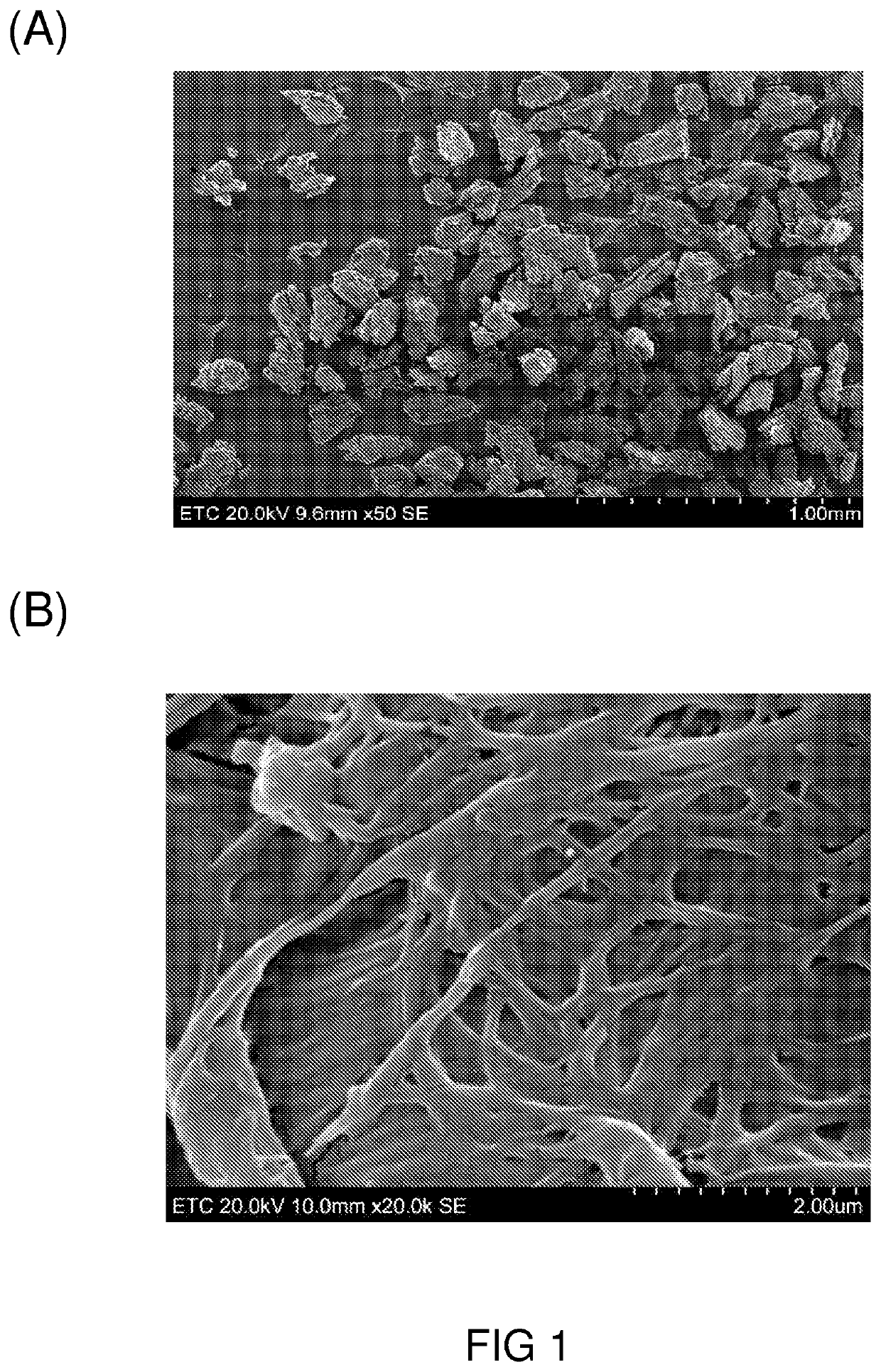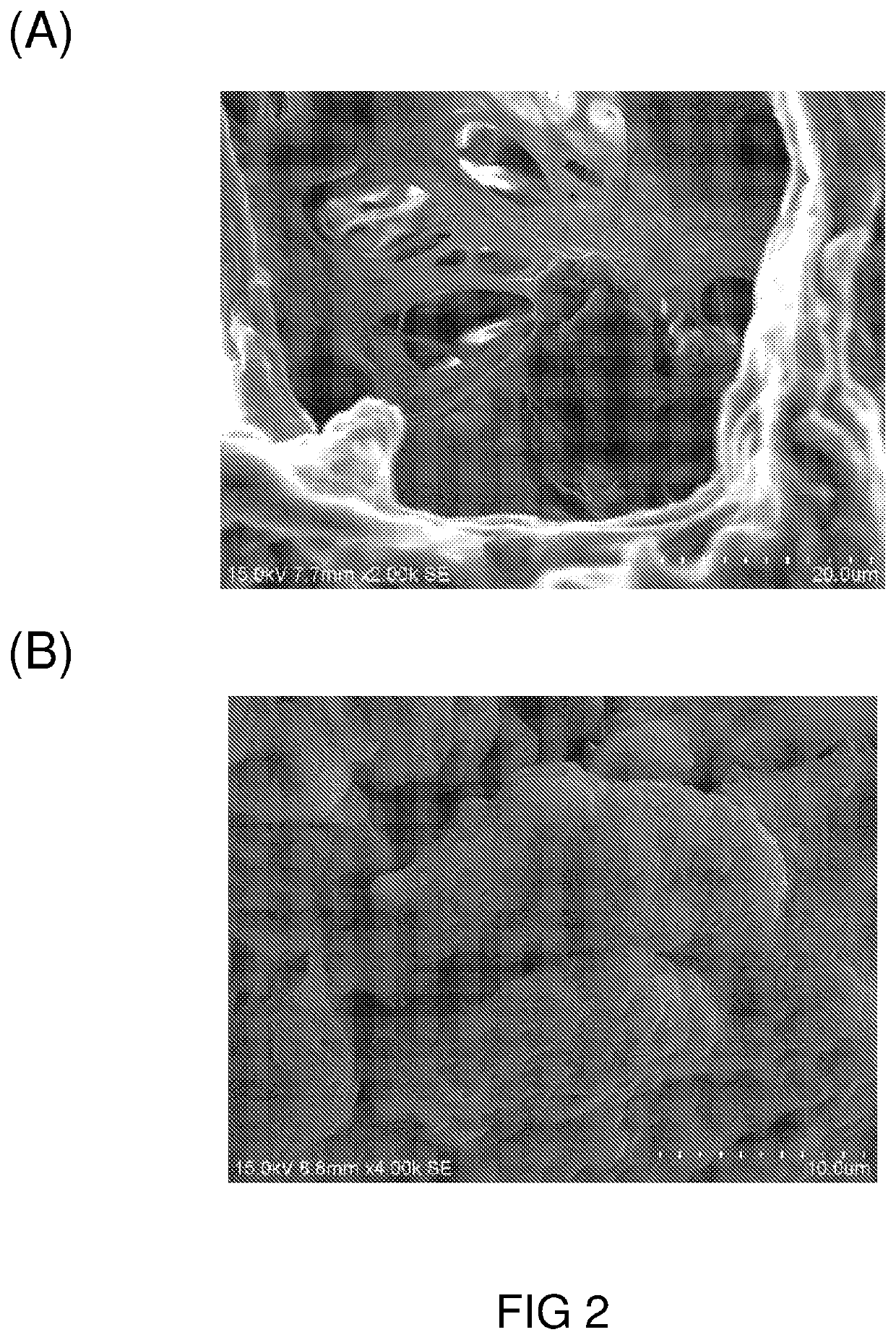Preparation of high purity collagen particles and uses thereof
a high-purity, collagen-based technology, applied in the direction of peptides, protheses, animal/human proteins, etc., can solve the problems of destroying the integrity of collagens, destroying collagens, and rendering them unsuitable for biological scaffolds, etc., to improve the skin condition or improve the condition.
- Summary
- Abstract
- Description
- Claims
- Application Information
AI Technical Summary
Benefits of technology
Problems solved by technology
Method used
Image
Examples
example 1 preparation
and Characterization of the Collagen Particles
[0075]1.1 Preparation of Collagen Matrix
[0076]A de-haired and de-fatted porcine rind of 0.2-0.4 mm was dried at 4° C. for 24 hrs, then was treated with scCO2 at 350 Bar, 37° C. for 40-180 min to remove any residual cellular matters.
[0077]The decellularized porcine rind was then subjected to various treatments at room temperature (about 22-28° C.), including sonicating, washing, enzymatic digestion and washing. Briefly, the decellularized porcine rind was sonicated (0.1 M Tris) for 1 hr, shaked at a speed of 100 rpm for 22 hrs, and sonicated again for another hour. Then, washed the sonicated porcine rind in sequence with, water (10 min / wash, 2 washes), a solution containing 1% Triton X-100 (shaking at a speed of 100 rpm, 24 hrs), and water (10 min each wash, total of 2 washes), so as to remove any impurities and produced a collagen matrix. The collagen matrix was then treated with a pepsin solution (0.01% pepsin in 0.5M acetic acid) for 1...
example 2
Allergy Tests the Collagen Particles of Example 1
[0084]To evaluate the potential risk of the present collagen particles in causing any allergic reaction to their hosts, a collagen extract was produced from the collagen matrix of example 1.1, then was used in various allergic tests, including pyrogen study, skin sensitization study, acute system injection study, and intracutaneous irritation study in accordance with relevant approved procedures, particularly, ISO 10993-10, 11.
[0085]2.1 Preparation of the Collagen Extract
[0086]The collagen matrix of example 1.1 (3×4 cm) was immersed in 0.9% saline or cottonseed oil at 50° C. for 72 hrs with constant agitation (150 rpm) to produce the collagen extract in saline or the collagen extract in cottonseed oil. The surface ratio of collagen matrix / 0.9% saline or cottonseed oil was approximately 1 cm2 / 1 mL.
[0087]2.2 Pyrogen Study
[0088]The pyrogen study was conducted in accordance with the protocols set forth in U.S. Pharmacopoeia National Formu...
PUM
| Property | Measurement | Unit |
|---|---|---|
| temperature | aaaaa | aaaaa |
| pressure | aaaaa | aaaaa |
| thickness | aaaaa | aaaaa |
Abstract
Description
Claims
Application Information
 Login to View More
Login to View More - R&D
- Intellectual Property
- Life Sciences
- Materials
- Tech Scout
- Unparalleled Data Quality
- Higher Quality Content
- 60% Fewer Hallucinations
Browse by: Latest US Patents, China's latest patents, Technical Efficacy Thesaurus, Application Domain, Technology Topic, Popular Technical Reports.
© 2025 PatSnap. All rights reserved.Legal|Privacy policy|Modern Slavery Act Transparency Statement|Sitemap|About US| Contact US: help@patsnap.com


